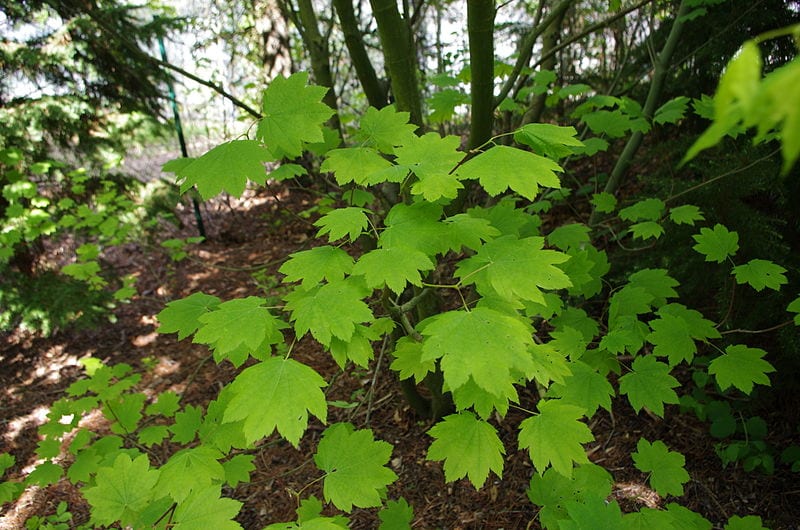
Maple trees are beautiful trees with webbed leaves that turn orange, yellowish, or reddish in the fall. But of course, many of them are ideal for medium or large gardens, and not so much for pots. Although that is not the case of the acer circinatum.
Although it is true that it can exceed 10 meters, it is a plant that tolerates pruning very well and is also very adaptable. Would you like to meet him?
Origin and characteristics

Our protagonist is a deciduous tree whose scientific name is acer circinatum. It is native to North America, specifically from British Columbia to California. It can reach a height between 5 and 18 meters, depending on whether it grows in an open or closed field. The leaves are palmate and lobed with 7-11 lobes 7-14cm long and wide, with serrated edges. These are green in color, but in autumn they turn bright yellow to orange-red before falling.
The flowers are small, with a reddish calyx and five greenish-yellow petals. The fruit is a dysmara.
What are their cares?

If you want to have a copy, we recommend that you provide it with the following care:
- Location: it is important to place the acer circinatum outside, in semi-shade.
- Earth:
- Pot: growing substrate for acidic plants mixed with 30% perlite. You can also mix 70% akadama with 30% kiryuzuna.
- Garden: it must be acidic (pH 4 to 6), rich in organic matter and well drained.
- Irrigation: every 2 days in summer and every 4-5 days the rest of the year. Use rainwater or lime-free.
- Subscriber: from spring to summer, fertilize with a fertilizer for acid plants following the indications specified on the product packaging.
- Planting or transplanting time: in spring, when the risk of frost has passed. In case of having it in a pot, transplant it every 2 years.
- Pruning: late winter. Dry, diseased or weak branches should be removed, and those that are growing too much should be trimmed.
- Multiplication: by seeds in autumn, and by cuttings or air layering in spring.
- Rusticity: supports up to -15ºC.
What did you think of this tree?